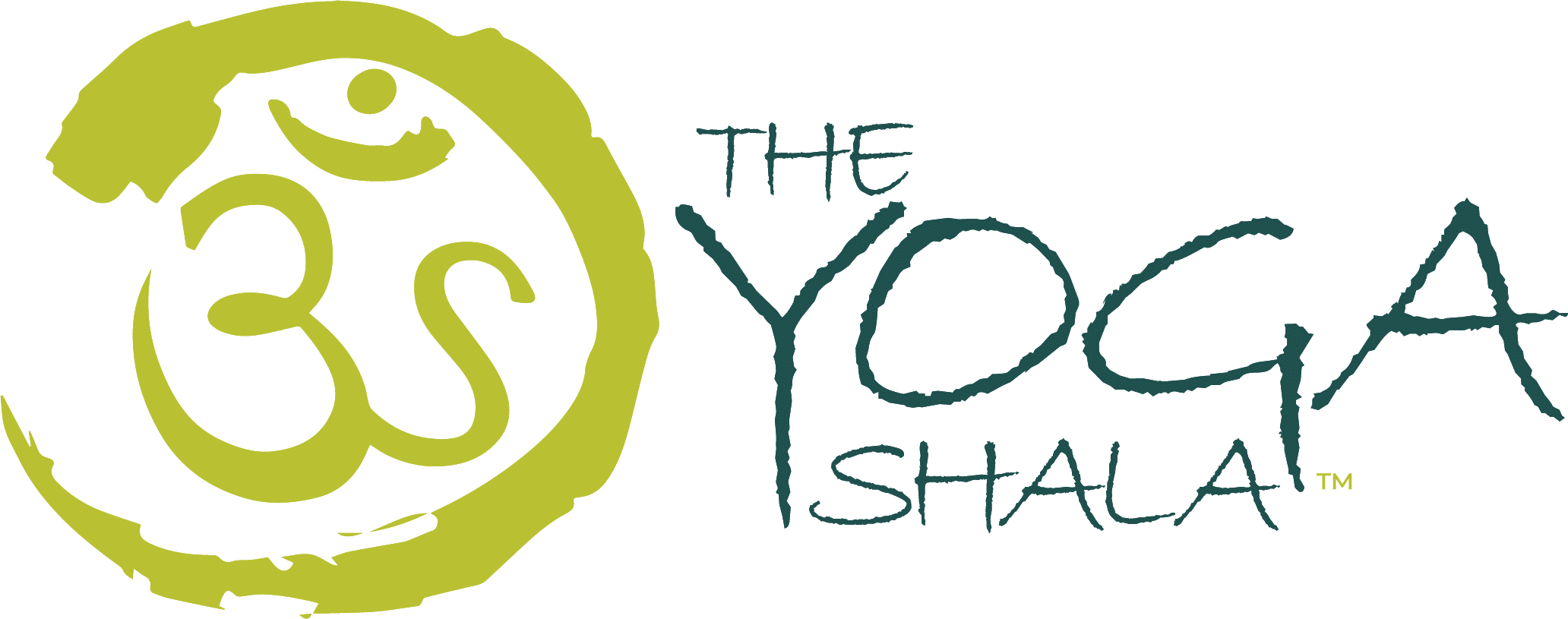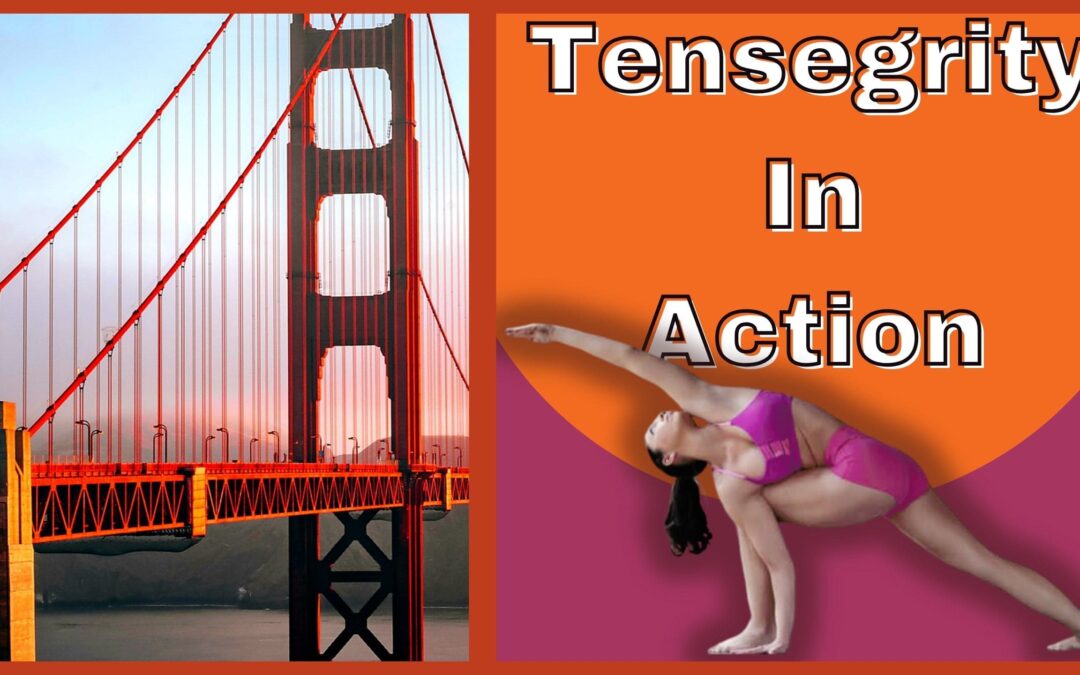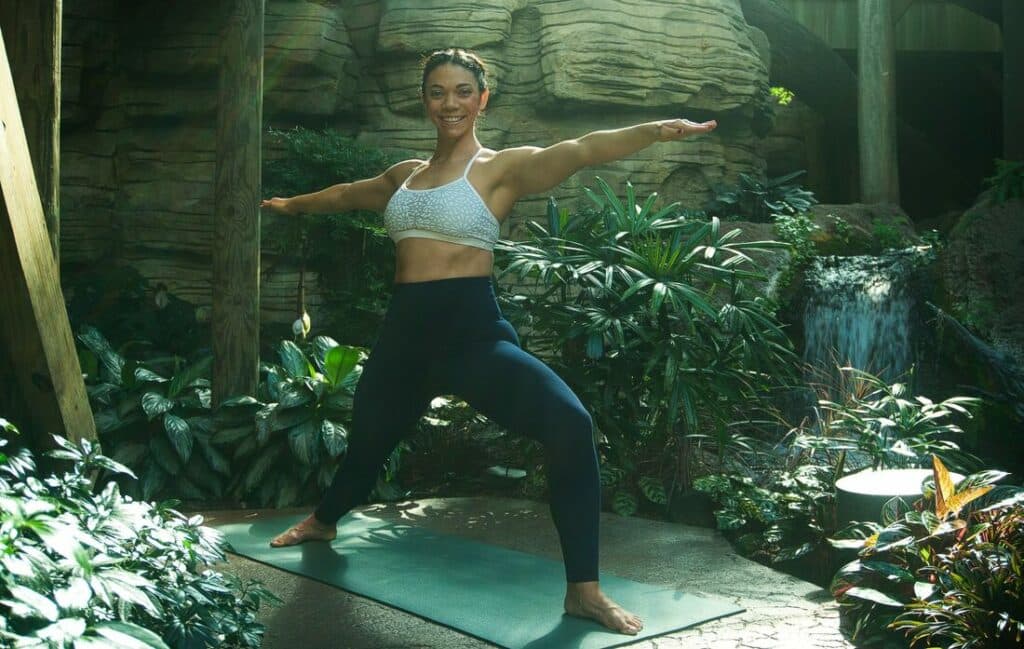Tensegrity
Tensegrity is a fascinating concept that combines tension and integrity, and it has been widely used in architecture and engineering. But did you know that tensegrity can also be applied to your yoga practice?
Tensegrity, coined by the architect and visionary inventor Buckminster Fuller, refers to a structural system that uses a combination of tension and compression to create stability and strength. In tensegrity structures, tension elements, such as ropes or cables, are balanced with compression elements, such as struts or beams, to create a self-supporting and dynamically stable structure. This allows for flexibility, adaptability, and resilience in the face of external forces.
So how does tensegrity apply to yoga? In yoga, we often seek balance and stability in our poses, as well as in our minds and bodies. Tensegrity can help us understand how to create a stable and balanced structure in our bodies while maintaining a sense of ease and freedom in our movements. Let’s explore how we can apply the concept of tensegrity in our yoga practice.
Finding Balance: Tensegrity in Asanas
Asanas, or yoga poses, require balance and stability to be performed correctly. Tensegrity can help us understand how to create a balanced structure in our bodies to support our poses. Just like a tensegrity structure, our bodies need both tension and compression to find balance.
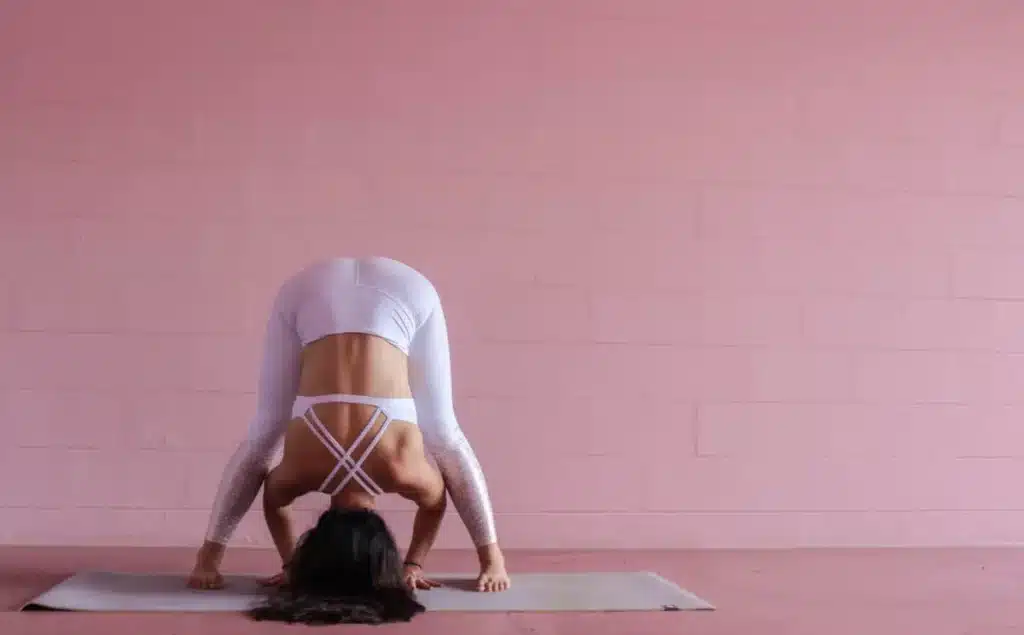
Krista Shirley in Prasarita Padottanasana A
For example, in a standing pose Prasarita Padottanasana A, we need to press down and out through both feet to engage the muscles in our legs to create tension and stability. We also need to press the hands down and forward to engage the muscles in our arms and upper back to create tension and stability. At the same time, we are working to maintain a sense of ease and lightness in the rest of our upper body. The tension in our hands and feet creates compression, while engaging mula bandha as we inhale helps the rest of our body remain relaxed, allowing for flexibility and freedom of movement. This combination of tension and compression creates a balanced structure, just like in a tensegrity system.
Building Stability: Tensegrity in Core Strength
A strong and stable core is essential in many yoga poses, as it provides the foundation for our movements. Tensegrity can help us understand how to create stability in our core by balancing tension and compression.
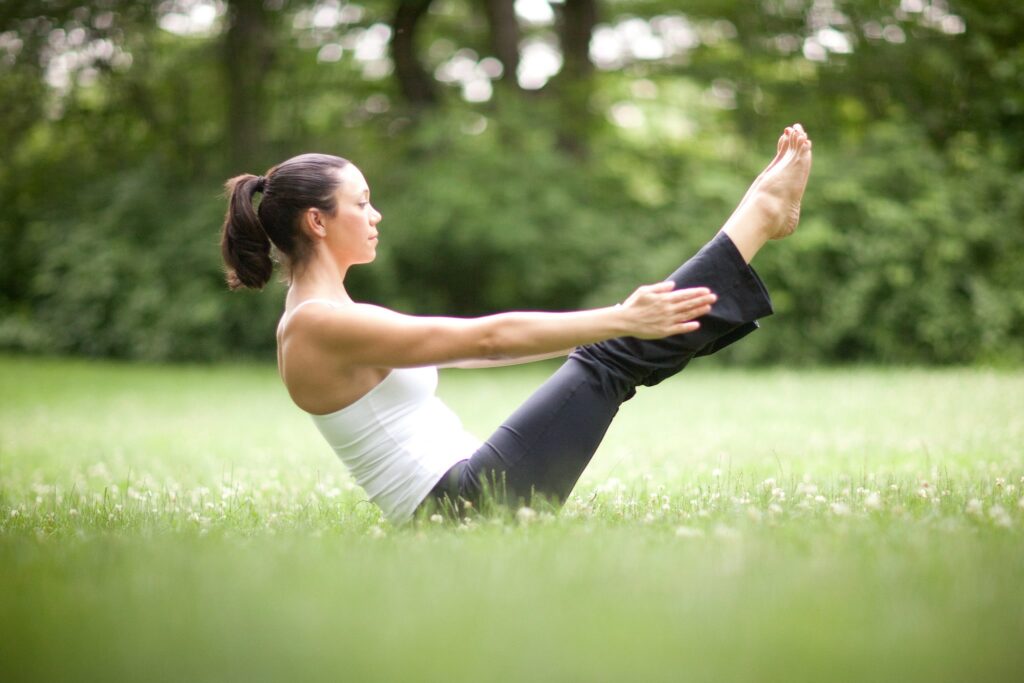
In a pose like Boat Pose (Navasana), for example, we engage the muscles of our abdominal area to create tension and stability, while also maintaining a sense of relaxation in our shoulders, neck, and face. The tension in our core muscles creates compression, while the rest of our body remains soft and relaxed, allowing for stability and ease of movement. This balance of tension and compression creates a stable and strong core, just like in a tensegrity structure.
Cultivating Mind-Body Connection: Tensegrity in Pranayama
Pranayama, or yogic breathing techniques, are an integral part of yoga practice and play a vital role in cultivating the mind-body connection. Tensegrity can help us understand how to use tension and relaxation in our breath to create balance and stability in our minds and bodies.
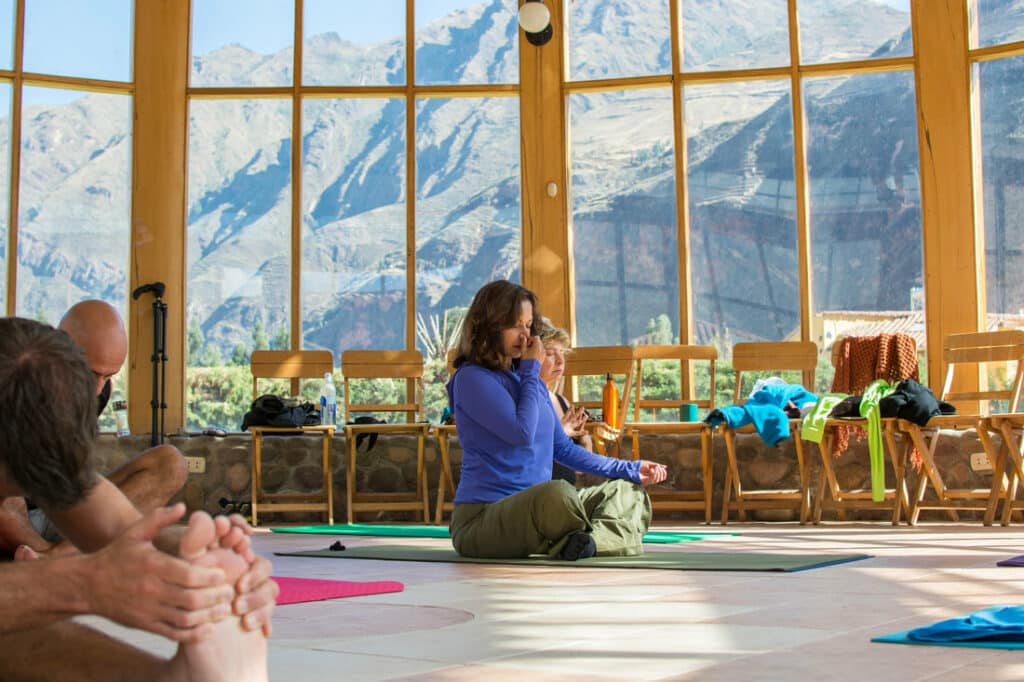
For example, in a breathing technique like Ujjayi Breath, we create tension in the back of our throat to control the flow of our breath, while also maintaining a sense of relaxation in our facial muscles and body. The tension in our throat creates compression, while the rest of our body remains soft and relaxed, allowing for a smooth and controlled breath. This balance of tension and relaxation in our breath helps us cultivate a calm and focused mind, just like in a tensegrity system
Enhancing Flexibility: Tensegrity in Stretching
Flexibility is a key component of many yoga poses, and tensegrity can help us understand how to optimize our flexibility by balancing tension and compression.
In poses that involve stretching, such as Forward Fold (Uttanasana), we create tension in the muscles that are being stretched, while maintaining a sense of relaxation in the rest of our body. This tension creates compression, allowing our muscles to lengthen and stretch without straining. By finding the right balance between tension and relaxation, we can enhance our flexibility and achieve deeper stretches with ease, just like in a tensegrity structure.
Preventing Injury: Tensegrity in Body Alignment
Proper body alignment is crucial in yoga to prevent injuries and promote safe and effective practice. Tensegrity can help us understand how to align our bodies in a way that distributes tension and compression evenly, reducing the risk of strain or injury.
For instance, in poses like Warrior II (Virabhadrasana II), we engage the muscles of our legs and arms to create tension, while maintaining a relaxed and aligned spine. The tension in our limbs creates compression, while the rest of our body remains balanced and aligned. This balanced distribution of tension and compression promotes optimal body alignment, reducing the strain on our joints and muscles and preventing injuries.
Mindful Awareness:
Tensegrity in MindfulnessMindfulness is an essential aspect of yoga practice, and tensegrity can help us cultivate mindful awareness by bringing attention to the balance between tension and relaxation in our bodies.
By practicing yoga poses with a heightened awareness of the sensations in our bodies, we can become more mindful of the tension and relaxation in different muscle groups. We can learn to find the right balance between tension and relaxation in each pose, adjusting our movements mindfully to maintain stability and ease. This mindful awareness of the interplay between tension and relaxation in our bodies can also be extended to our minds, helping us cultivate a sense of balance, stability, and calmness in our overall well-being.
Tensegrity is a powerful concept that can enhance our yoga practice by helping us find balance, stability, flexibility, prevent injuries, and cultivate mindful awareness. By understanding the interplay between tension and relaxation in our bodies and minds, we can optimize our yoga practice and experience a deeper connection between our mind, body, and breath.
Embrace the art of tensegrity in your yoga practice! And if you’d like to practice tensegrity in action, be sure to check out our other video on Tensegrity where we apply this concept to several yoga postures to help you begin to tangibly apply the concept of tensegrity and unlock new levels of balance and stability on and off the mat!
Practice with The Yoga Shala
If you want to join us for LIVE classes, The Yoga Shala offers virtual and in person classes every weekday morning. We are located at 140 Circle Drive #4, Maitland, Florida. Owner, Krista Shirley, also offers virtual or in person private sessions (Yoga, Meditation, Breath-work, Nutrition, Life Coaching and Mentorship). Visit theyogashala.com for details.
Be sure to signup for our newsletter to stay on top of local events and classes, Nysa products sales, new offerings, new products and more!
We hope you find this video series helpful to you in creating or maintaining your yoga practice!
About Krista:
Krista Shirley is a level II authorized Ashtanga Yoga teacher. She is deeply passionate about sharing these teachings with all who wish to learn.
If you want to join Krista in person she teaches daily classes at The Yoga Shala in Maitland, Florida. She also offers virtual sessions in Yoga, Meditation, Breath-work, Nutrition, Life Coaching and Mentorship. Check out www.theyogashala.com for more details.
If you do not live in Central Florida and want to find an authorized teacher in your area, check out our teacher, Sharath Jois’ website, for a list of all teachers authorized and certified by his yoga centre in India.
|
|
|
|
|
|
|
|
|
|
|
|
❤️SHOP MERCHANDISE: Nysa Products
❤️LET’S BE SOCIAL:
Instagram: Krista Shirley Yoga
Instagram: The Yoga Shala
Facebook: The Yoga Shala
Facebook: KristaShirleyYoga
For other inquires please contact: [email protected]
